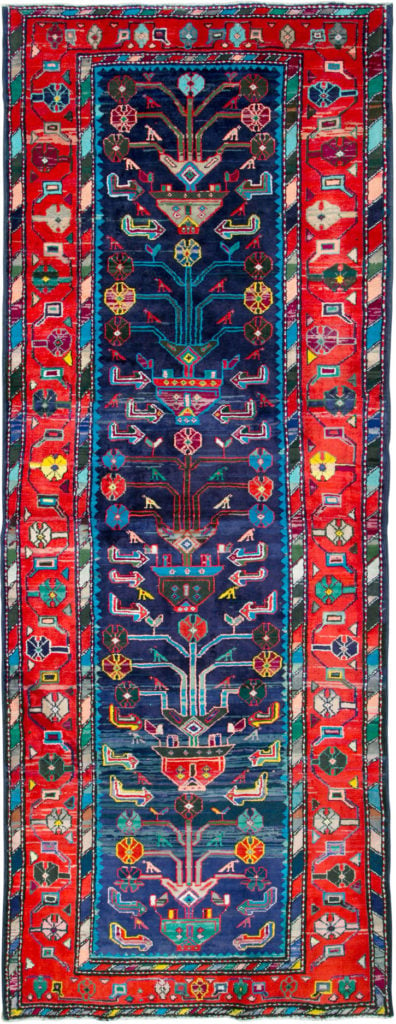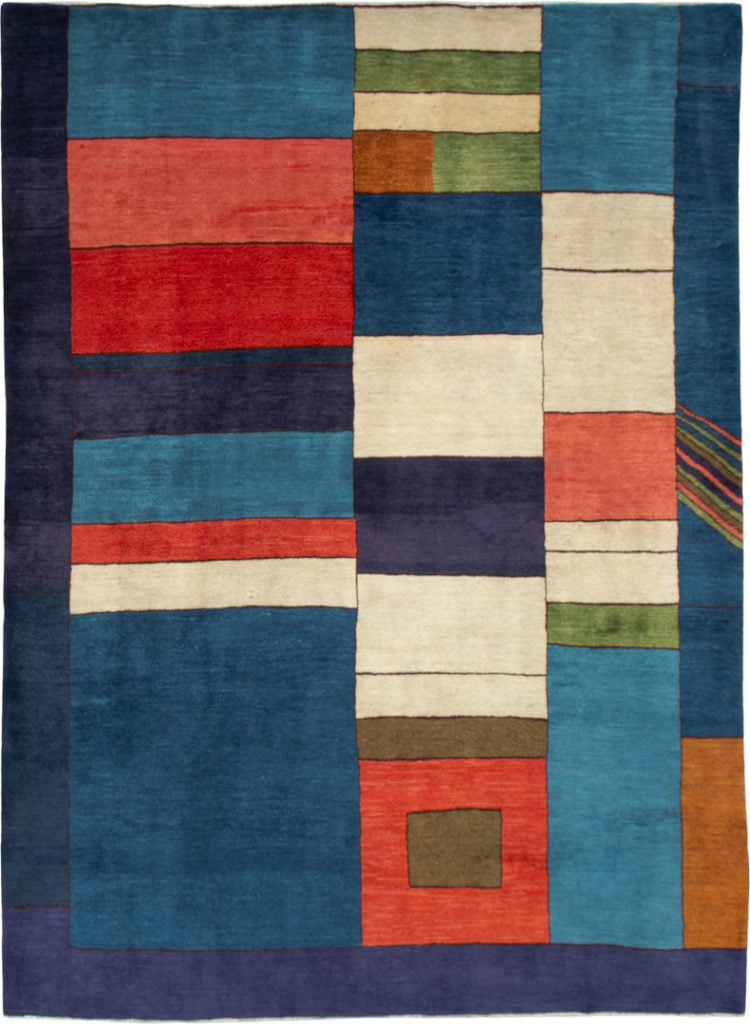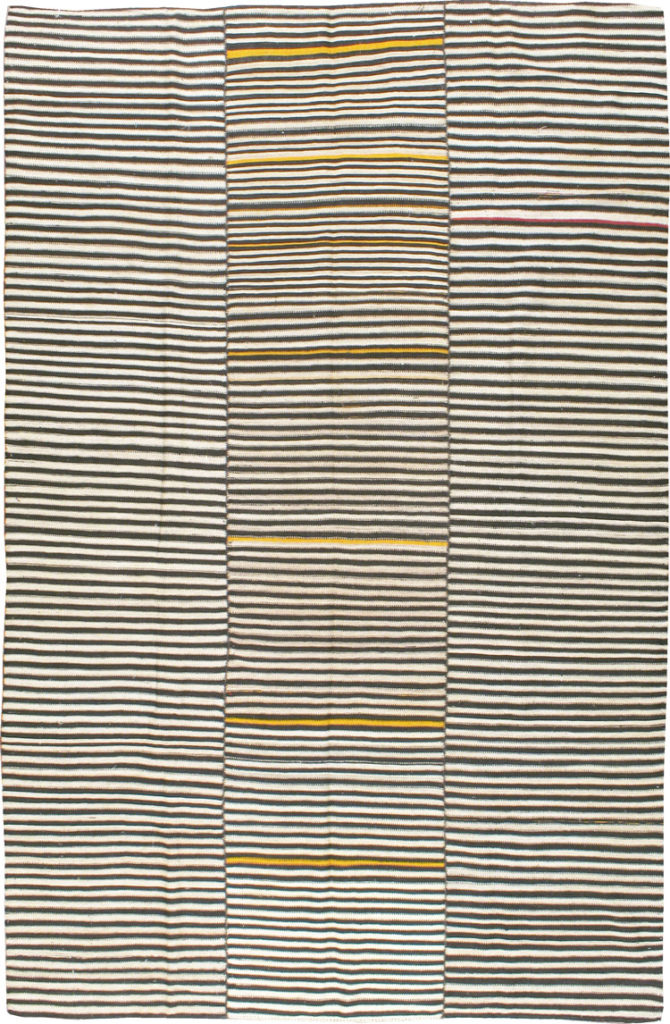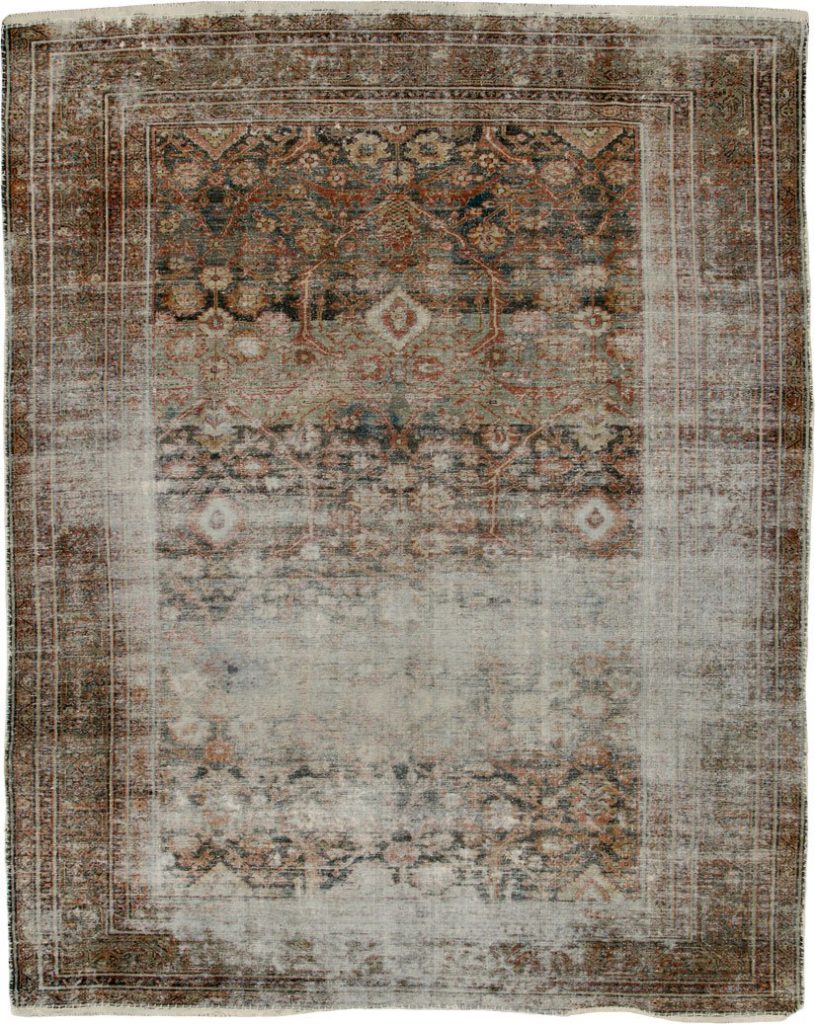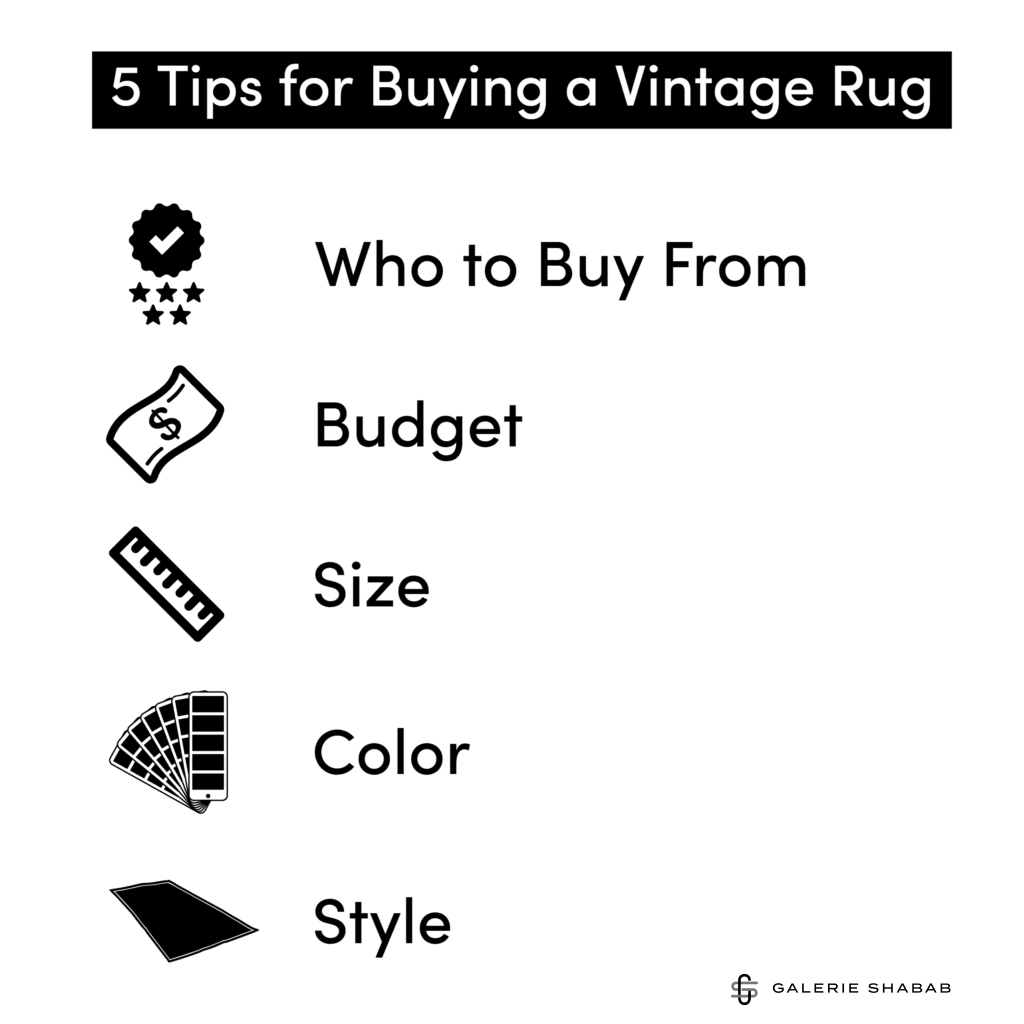
We discuss everything you need to know to help find the perfect vintage rug.
‘Vintage’ is the new vogue buzzword. Not merely old, but old and good. So what is a vintage rug? Rugs, along with other items of use, craft and art, naturally sort themselves chronologically. As a rule of thumb, any carpet 100 years of age or older is antique. A rug under, say, twenty five or thirty years of age is new, recent, or contemporary. What’s in between is vintage. ‘Vintage’ has replaced ‘semi-antique’ in the trade. Ideally, a vintage rug should show some signs of use, but should not be beaten up and compromised, unless one is going for a ‘Shabby Chic’ look. A tired mediocre vintage rug is just a tired rug. Think of vintage as a school for rugs. Every year a class graduates to antique status. Thus rugs woven in or before 1919 are or are becoming antiques. Similarly, every year a new class of rugs matriculates. If new is no more than 25 years of age, the most recent vintage class is from 1994.
In this seventy or seventy five year period, the Oriental rug has undergone numerous changes, some beneficial, some peculiar, and others downright toxic. Among the more uplifting is the whole Art Deco period and its postwar sequel, the Modern era. Carpets lost their borders, patterns became geometric and abstract, color palettes widened, and some of the busyness was exchanged for a cleaner look. The difference, say, between vintage Chinese Art Deco carpets and the traditional 19th century Chinese-y Chinese carpets is nothing short of amazing. Other groups took difference paths. The vintage 1930s “American” style red and navy Sarouk with its detached floral spray pattern bears no resemblance whatsoever to the traditional medallion and corners styles of its antique predecessors. The notion of the framing border is an age-old protocol, but vintage carpets from the 1930s onward first penetrated, then violated, and finally did away entirely with this convention. Vintage rugs from Turkey and Persia adopted colorful, purely geometric, mosaic patterns. This innovation was only suggested in the past. And weave types expanded. We find vintage rugs in innovative combinations of knotted pile and flatweave, or in more mixtures of pile-less techniques.
The universe of vintage carpets is huge. The carpet business expanded greatly in this era, even with a World War and a Great Depression to temporarily throttle things. Countries that never before contributed to the rug trade suddenly became major players, and the craft grew mightily in more established realms as well. As a result, the choices abound. There is a vintage rug, or more than a few, for every use, size, and budget. Vintage rugs employ both natural and synthetic dyes, and many have been toned post-production to suit decorating trends. However, they are still hand-knotted of wool, silk, and cotton by the same tribesfolk, villagers, and urbanites responsible for the best antiques.
5 Tips to Shop for Vintage Rug
Where to Buy Vintage Rugs
First, and always foremost, work with a dealer of integrity who accurately describes his merchandise, stands behind it and gives a competitive price. Vintage rugs should be priced at less per unit area than true antiques. In general, a vintage Tabriz, say, is usually somewhat cheaper than an antique Tabriz of the same size. Of course, decorative value plays a significant part in the final price. On the other hand, an attractive vintage carpet may be at least as expensive as a new one. But charm, mellowness, and current design trends will be the deciding factor. There are plenty of attractive rugs to choose from, and comparison shopping, actually touching the goods, is essential. This will develop your eye and fill your mind with possibilities that were never part of the original plan.
Budget
Keep to your budget, but be flexible. A room size with a flexible $2,000 budget can still work at $2,500, but don’t be snowed by pretentious twaddle for $10,000. Be realistic.
Rug Size
Know your sizes, minimum and maximum. Measure three times, buy once. Different sizes and proportions change visible room proportions. Accent rugs are movable, large carpets are forever. Light colors look bigger than dark ones. Dark tones bring down, light tones lift up. Vintage rugs are more often light than dark since the traders and weavers found out that Western buyers liked light rather than richness; expansiveness rather than saturation.
Color
Vintage rugs are often toned. Do you want bright, pure spectral colors or something more neutral? A neutral room palette often needs a splash or explosion of color. Fabric swatches are not a straitjacket. Be flexible. Try the rug at home, in the intended context. Vintage rugs have mellowed in color and it is best to see them in their interaction with the rest of the decor Rugs have a chameleon-like character, subtly adjusting to and promoting the ambient decor A reputable rug dealer will allow this try-out procedure. One who will not is prima facie not reputable. Avoid this person.
Rug Style
Vintage carpets have, as noted above, expanded or exploded the usual style siloes of traditional and modern. If condition is not an issue, the rise of Shabby Chic, interesting rugs of artistic merit but compromised condition, may be your direction. Remember, that some ‘Shabby Chic” rugs have lost some durability and are not great for heavy traffic areas; others are actually in great condition, but just have a weathered and distressed appeal. The aesthetic is totally different between the former and the latter. Know which you prefer or ask if you don’t know.
Mix and match. Vintage rugs are often in combinations of urban and rustic styles. Vintage rugs can work together while the strong artistic and ethnic personalities of antique rugs often create tensions and conflicts.

